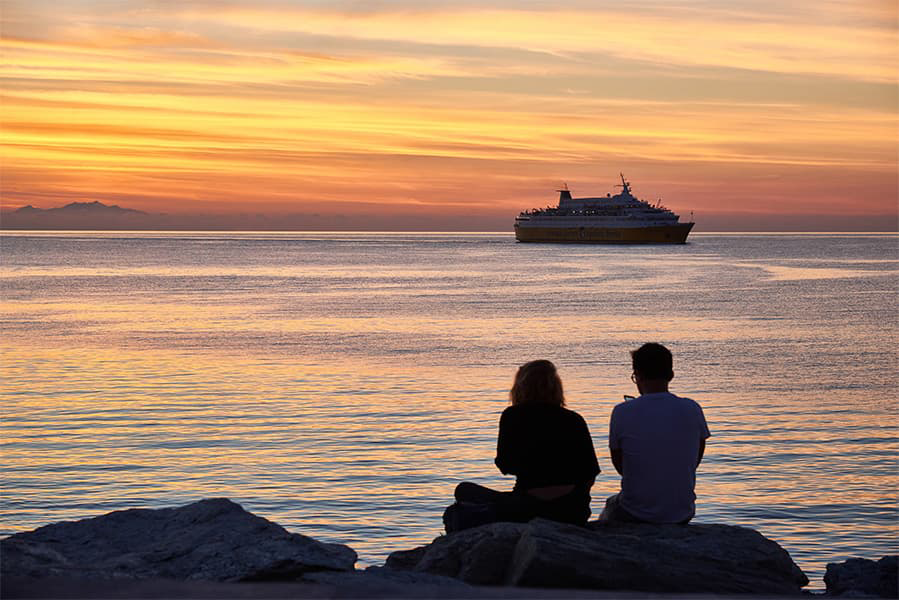Punta del Este - Buenos Aires
Ferry to Argentina
Punta del Este - Buenos Aires
Ferry to Argentina

The Punta del Este Buenos Aires ferry route connects Uruguay with Argentina and is currently operated by 2 ferry companies. The Buquebus service runs up to 13 times per week with a sailing duration of around 6 hours 15 minutes While the Colonia Express service runs up to 5 times per week with a duration from 7 hours 30 minutes.
So that’s a combined 18 sailings on offer per week on the Punta del Este Buenos Aires route between Uruguay and Argentina. Compare now and get the best fare at the time that you want to travel.
More routes than anyone else.

Compare fares, times & routes in one place.
Change plans easily with flexi tickets.

Book e-tickets & manage trips in-app.
Live ship tracking & real-time updates.

Top-rated customer support when you need it.
A playground for the elite; a getaway for the rich and famous; a carnival of money and debauchery – it’s fair to say Punta del Este has developed quite a lascivious reputation. Bronzed bodies in Bikinis adorn the beaches, luxury yachts line the harbour and towering skyscraper apartments afford breathtaking views of the wealthy extravaganza. There is no restriction on who can reside in the deluxe apartments, but there may as well be; astronomical rent and deposits even ostracize much of the middle classes. In spite of the sea of wealth, visiting for a few days is accessible to most people, and the hedonistic haven provides quite a spectacle. The price may repel some visitors, but there aren’t many better places in South America than Punta Del Este to experience the vitality and energy synonymous with the continent. Head to the myriad of gorgeous beaches to bask in the sun whilst sipping on a cocktail at one of the beach clubs dotted along the shoreline. For a more tranquil experience, Arboretum Lussich is the perfect place to while away the hours in relative peace amid stunning surroundings. The nature and nightlife embody the city, yet there is some beautiful architecture in the centre; for a small fee you can peruse the stunning designs of the Taller de Casapueblo to gain an insight into Uruguay’s history.
Walking is a popular way to travel around the waterfront, especially when the weather is agreeable. Many young people choose to hitchhike between night clubs due to the distance between them and the very high taxi prices.
The city of Buenos Aires, located on the western shores of the vast River Plate estuary, is the largest city and capital of Argentina. It’s a multicultural metropolis that has retained much of its historical European identity, evident in the downtown clash of architecture that ranges from the soaring towers of the central business district to the pink walls of the Italianate-style Casa Rosada presidential palace. The ferry port of Buenos Aires is found to the north of the main collection of piers and shipping yards found in the Retiro borough of the city. The terminal here is set along the grass-lined banks of the Lujan river that flows into the larger River Plate, just to one side of a large man-made marina. A waiting area can be found inside the building and a limited number of car-parking spaces are available along the road into the harbour . Just a few minutes’ walk from outside the port entrance is the Marina Nueva train station that offers routes deeper into the suburbs of Buenos Aires, including a stop by the city’s international airport on the coast. The extensive National Route 9 highway, just a few minutes’ drive from the port, cuts north and connects motorists to other major Argentinian cities including Rosario and Cordoba. Passenger routes run from the port multiple times throughout the week, serviced by Buquebus and Colonia Express ferries. Both these lines offer daily routes to the nearby capital of Montevideo in Uruguay, a short distant across the River Plate, and the smaller Uruguayan city of Colonia Del Sacramento. Colonia Express also sails to the port-town of Carmelo a number of times per day.